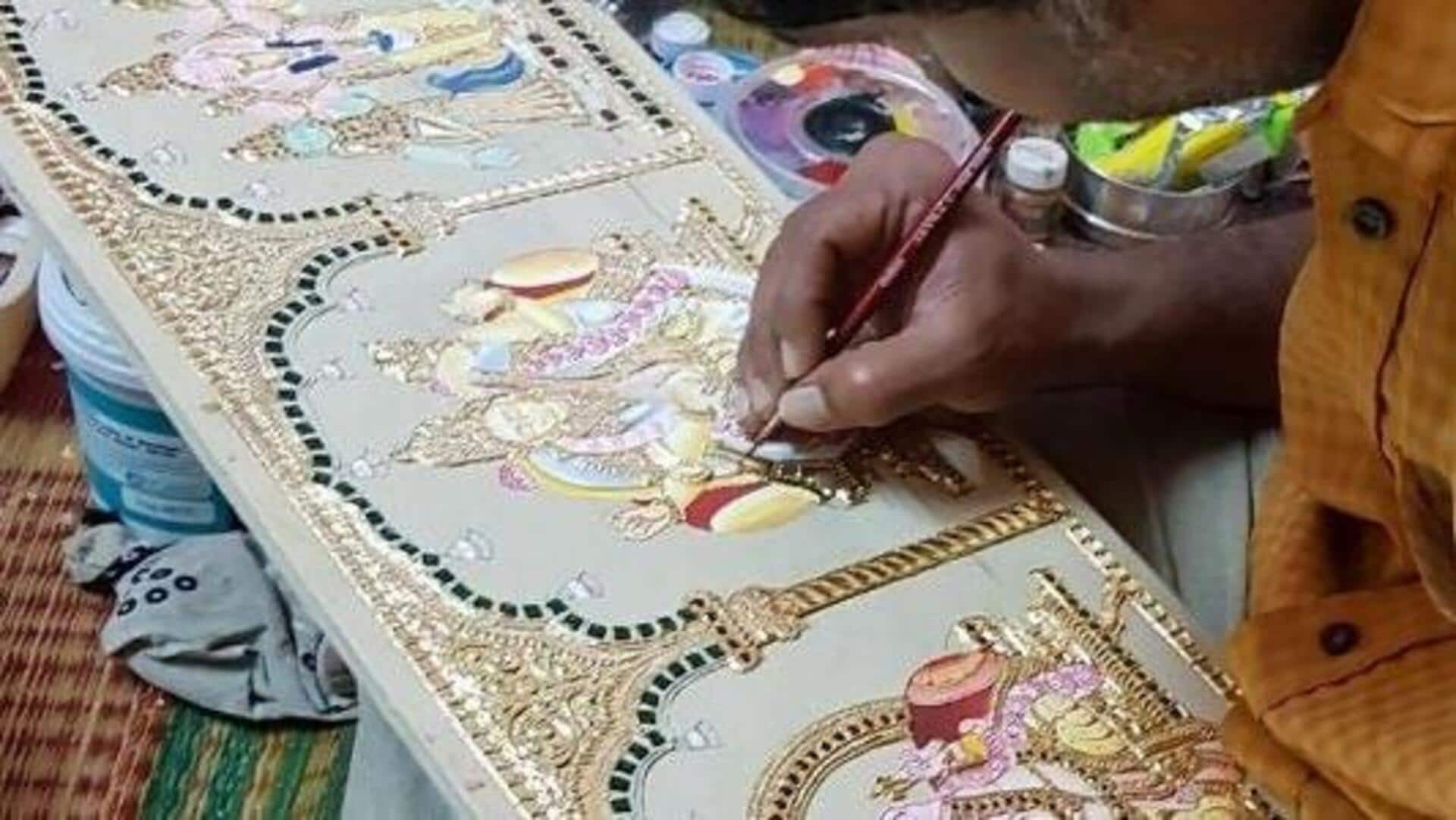
All about India's vibrant Tanjore painting heritage
What's the story
Classical South Indian art form of Tanjore painting is famous for its rich colors and intricate designs. Hailing from the town of Thanjavur in Tamil Nadu, the art form has been practiced since centuries. Famous for its surface richness and compact composition, Tanjore paintings usually depict Hindu gods and goddesses. The use of gold foil to highlight certain aspects adds a unique dimension to these artworks. Let's explore various facets of Tanjore painting heritage.
Origins
Historical roots of Tanjore painting
Tanjore painting dates back to the 16th century when the Nayakas of Thanjavur ruled. These rulers were great patrons of arts and culture and that's how this unique style flourished. The paintings were originally made as murals but later transformed into smaller panel paintings that could be showcased at homes.
Craftsmanship
Unique techniques and materials
The entire process of creation includes many stages, the first of which is preparing a wooden base covered with cloth and a paste of chalk powder. The outline is then sketched by artists using natural dyes before colors made of vegetable extracts or minerals are added. Gold foil is carefully applied to highlight certain elements, giving these paintings their signature glow.
Depictions
Themes and iconography
Tanjore paintings are famous for their portrayal of Hindu deities, including Krishna, Lakshmi, and Saraswati. The artworks often depict mythological scenes, inspired by epics such as the Ramayana or the Mahabharata. With round faces, almond-shaped eyes, and graceful postures, the figures in these paintings emanate a divine aura. This iconography not only portrays religious tales but also highlights India's cultural heritage with vivid colors and detailed compositions.
Contemporary scene
Modern relevance and preservation efforts
Though it is an ancient art form, Tanjore painting has managed to survive even today, thanks to continuous efforts of artists and cultural organizations towards preservation. Workshops are held regularly to educate new generations about traditional techniques, while modernizing them for contemporary tastes without compromising on authenticity.